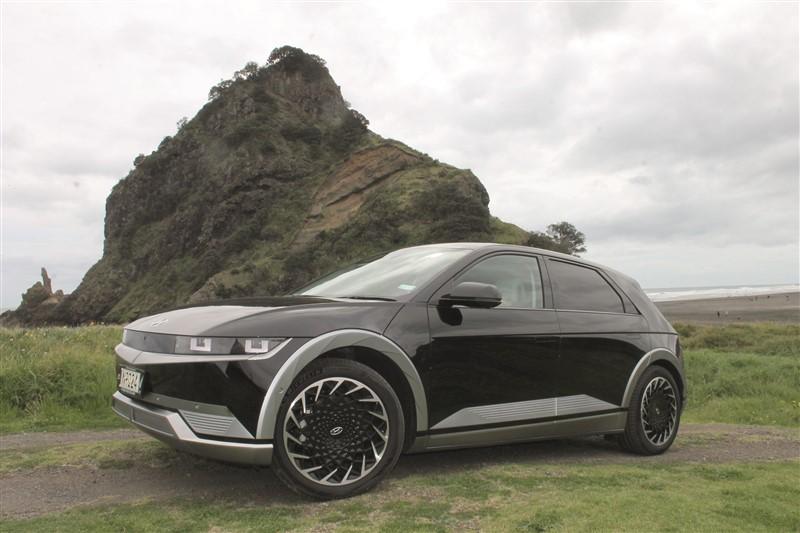Hyundai’s most anticipated vehicle for 2021, the IONIQ 5, debuted at our two major ‘motorshow’ events – Fieldays and the eworld 2021 expo – which resulted in a huge
level of interest.
The IONIQ 5 is nothing short of remarkable and is destined to carry the title “Tesla slayer’’.
Where Elon Musk’s EV creations tend to appeal to those of a whimsical nature with farting indicators, Ludicrous Speed, Reindeer lanes and in short, childish gimmickry, Hyundai’s got the edge on what normal people want to be seen in when it comes to electric vehicles.
Hyundai’s secret? Well, being able to draw on a few years of electric vehicle development with very good EV platforms, the Kona Electric Series II falls foremost to mind, and the earlier Ioniqs, so quickly snapped up by eco-conscious businesses, is a pretty good place to start.
Then, having a plan to build on that level of success and develop a series of EVs to follow in the tyre-prints of the market leader of today is a good follow on, and Hyundai has that in place.
But what about the real physical story of the IONIQ 5? Well, it starts with Hyundai developing the E-GMP or the Electric-Global Modular Platform.
The IONIQ 5 was always going to be an EV from its genesis, rather than be an EV system shoehorned into an existing vehicle.
With safety, occupant space and electric performance in mind, the E-GMP modular concept came together, resulting in a platform able to accommodate a standardised battery system into a wide range of vehicle types.
The occupant space consideration is a major one. With the E-GMP platform, Hyundai design teams were able to maximise interior space using designs that only an EV can provide.
The air conditioning system for example, which ate up so much inner cabin space, has been moved to the space where the traditional ICE engine was, that space occupied by a smaller electric motor.
IONIQ 5 has a massive 3000mm wheelbase – that’s 100mm longer than the Hyundai Palisade BTW – for a five-seater vehicle and, with its 4635mm overall length, the IONIQ 5 is not one of the small CUVs (crossover urban vehicles) we have seen in the past from other automakers.
The IONIQ 5 feels gloriously spacious on the inside and has a commanding road presence. As far as other CUVs go, it is best described as a 3XL model.
Nor is it light. Partially due to its ‘skateboard style’ underfloor battery – which gives the Hyundai its 470-480km range – the IONIQ 5 tips the scales between 2020 and 2100kg. In comparison, a Tesla 3 weighs in at 1875kg.
That’s sort of like comparing Joe Louis to Michael Spinks – heavyweight vs light heavyweight – so the IONIQ 5 is not necessarily the fastest on its feet – though a 0 to 100kmh time of 5.2 seconds is nothing to sneeze at – but it has plenty of power to its punches.
Charge time? Yes, that’s one of those power punches. The IONIQ 5 has the option of 400 or 800-volt charging.
This, says Hyundai, means you can charge from 10 percent to 80 percent in just 18 minutes. Staggering? Yes, but there’s a catch – that only works if you can find a 350kW DC charger. Not easy to find, but possible. A regular house plug charger will take something on the order of six hours.
There is a complete range ladder for the IONIQ 5, which is another successful strategy you can develop when you’ve been an automaker with history, and you are building the solid blocks of an electric vehicle future.
PRICING:
IONIQ 5 58 kWh 2WD $79,990
IONIQ 5 72.6 kWh Extended Range 2WD $89,990
IONIQ 5 72.6 kWh Extended Range AWD $94,990
IONIQ 5 72.6 kWh Elite 2WD $96,990
IONIQ 5 72.6 kWh Limited AWD with Vision Roof $109,990
IONIQ 5 72.6 kWh Limited AWD with Solar Roof $112,990



